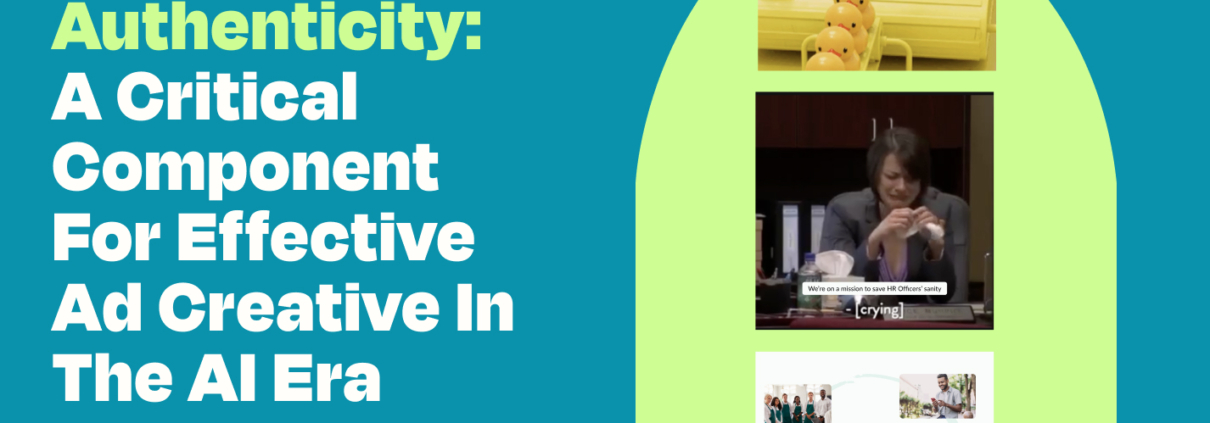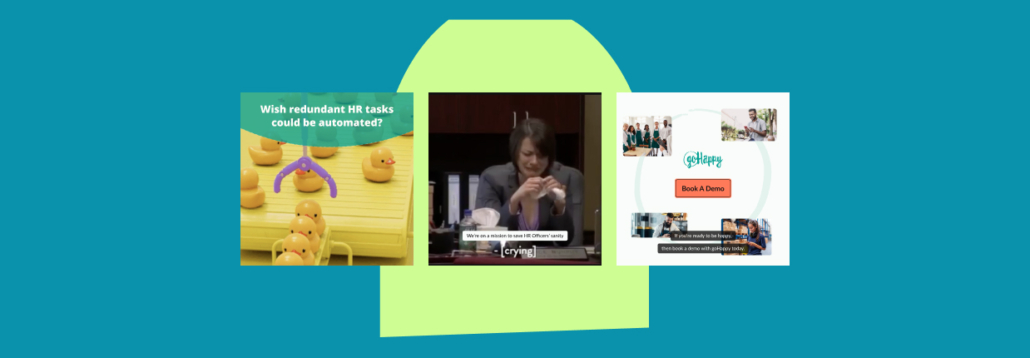Authenticity: A Critical Component for Effective Ad Creative in the AI Era
With the rise of AI and other tech tools, creating content quickly and affordably has become more accessible than ever. But here’s the kicker: is all this content actually making an impact?
At Tuff, we’re embracing AI across our creative process, from testing multiple variations swiftly to streamlining everything from concepting to final assets. This not only allows us to pass savings to our clients but also enables us to serve our clients faster and more efficiently, without compromising on quality.
However, there’s one crucial piece that can’t be overlooked: a solid creative strategy. Without it, your content won’t consistently engage your audience or drive revenue, no matter how much you produce or how efficient the process is. Sure, AI has improved our creative process and outputs, but without a strong creative strategy, success can still elude us.
In this post, I want to dive into why we believe that authentic, low-fi assets can actually outperform their slicker counterparts when it comes to developing ad creative that will maximize your media dollars.
The Cost of Playing it Safe
As organic reach declines, the natural response is to pump out more content faster and cheaper to increase your chances of being seen. Doubling down on paid media often goes hand in hand with this approach. But the reality is that pouring resources into run-of-the-mill content doesn’t necessarily lead to revenue. It just drives your waves of messages into a sea of sameness, regardless of your audience targeting and budget.
In crowded online (and offline) spaces, generic content blends into the background making standing out tougher than ever. At Tuff, we’ve seen firsthand the power of breaking the mold.
The Rise of Authenticity
One of the most exciting content trend developments we’re seeing is in B2B marketing. Influencers and user-generated content (UGC), once reserved for consumer brands, are now becoming staples in B2B creative. Why? Because behind every business is a human decision maker who responds to visuals and messaging just like you would. In a space flooded with charts, graphs, jargon, and salesy buzzwords, it’s genuine human connection that stands out. By partnering with influencers and content creators to embrace UGC, B2B brands can build trust and connect with their audience in meaningful ways.
B2B Ads With Personality: A Case Study with goHappy
Let me give you a very specific example using one of our existing clients, goHappy. Rather than sticking static assets, we decided to level up by collaborating with a content creator to test a couple of user-generated videos tailored specifically to their audience. Our main priorities with these assets were nailing the messaging and ensuring standout creative design.
- Strategic Messaging: By utilizing goHappy’s persona research and applying insights gleaned from our previous message testing results, we had a solid head start in understanding what types of tedious HR tasks our audience struggles with and some of the language they’re responding to in ads. We also knew that the average HR manager appreciates work related humor, so video scripts were written with some spicy HR memes in mind.
- Creative Design: Nothing humanizes HR like adding some personality. We turned to a UGC content creator marketplace called Twirl to help source a creator that would deliver our scripts in an engaging way. (Our creator, Amanda, even has HR experience, so we knew it was a perfect match!) From there, the Tuff motion team added gifs, goHappy branded motion graphics, and sound effects to her footage to bring additional life to the videos.
The results speak for themselves. After introducing the following 3 video assets to our LinkedIn ad creative mix, we were able to improve goHappy’s CPL by 34% in just 30 days.
Putting People First: Practical Steps for Your Strategy
Now, goHappy is just a single example, and there are numerous ways to infuse your ad creative with a human touch and authenticity. Here are some practical tips, based on what we’ve seen work across our client accounts, that you can start implementing today:
- Know Your Audience: Dive deep into who your audience is and what their day-to-day struggles are. Aim to help them solve their problems, not sell them your platform. Lean into value propositions, customer research, and agile message testing to determine what your customers care about and how to get their attention. Create Intentionally: Consider the most impactful ways to get your message across to your audience. If it’s a quick message, a static graphic is great. If it requires some explanation, video is your friend. Keep in mind that your viewer is always a human, even in B2B.
- Test and Learn: Experiment with different approaches and learn from what works (and what doesn’t). As long as you have a creative testing framework, no under-performing content is wasteful. A nimble approach allows you to adapt and evolve your strategy over time.
- Embrace Technology: Use tools and automation to streamline your content production process. This gives you more time for strategic thinking and ensures your messaging stays human-centric. Currently, we’re finding great support from tools like Envato, Stocksy, Adobe Stock, Pexels, Unsplash, and Artlist.io.
By prioritizing a people-first approach and embracing a nimble testing strategy, you can create content that stands out and drives real results. Whether you’re a big brand or a scrappy startup, these insights apply to businesses of all sizes. By putting people at the heart of your strategy, you can cut through the noise and make meaningful connections that drive growth.






